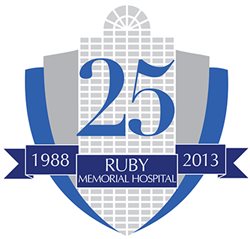Paperless progress: WVU Healthcare awarded for
e-records transition, use, management
MORGANTOWN, W.Va. – Rooms crowded with shelves of bulging orange file folders of patient records on Ruby Memorial Hospital’s first floor are now a distant memory, and the use of electronic medical records is a proven, effective way to streamline patient care while protecting personal health information. Now, WVU Healthcare’s flagship hospital and associated outpatient clinics have been recognized as national leaders at the forefront of successfully putting new records technology to work, earning HIMSS Analytics’ highest benchmark, their Electronic Medical Records Adoption Model (EMRAM) Stage 7 Award. 
Just over two percent of health care organizations nationwide have achieved this designation, with separate award categories for hospitals and outpatient clinics. WVU Healthcare is only the fifth organization in the country to receive Stage 7 recognition for both, and is the lone health provider in West Virginia to reach this status.
HIMSS Analytics is a not-for-profit subsidiary of the Healthcare Information and Management Systems Society (HIMSS). The company developed EMRAM in 2005 as a methodology for evaluating the progress and impact of electronic medical record systems for hospitals in the HIMSS Analytics™ Database. There are eight stages (0-7) that measure a hospital’s implementation and utilization of information technology applications. The final stage, Stage 7, represents a paperless, advanced patient record environment.
“This transition was a $91 million decision,” Bruce McClymonds, WVU Healthcare president and CEO, explained. “The decision to make this significant investment was predicated on the presumption that we could affect significant improvements in patient care, clinical quality and outcomes through the more effective use of clinical information.”
WVU Healthcare has had an electronic medical record and computerized physician order entry system for 20 years. Several years ago, the decision was made to explore the implementation of a significant upgrade to what is considered the most advanced, state of the art integrated electronic medical records system in the healthcare industry. Clinicians instantly access accurate, real-time patient records in any WVU Healthcare facility, helping our providers more effectively diagnose patients, reduce preventable medical errors and provide safer care.
“A hospital can make the transition from paper charts to electronic records, but not use that system to its fullest potential,” said Kevin Halbritter, M.D., chief medical information officer at WVU Healthcare. “We are better equipped to fill gaps in care that would be more likely if our system wasn’t noting condition-specific tests that should be ordered, such as a yearly mammogram for a woman over 50. Our records system reminds our physicians to schedule routine screenings that might otherwise be forgotten.”
“Advanced, smart use of electronic records has had a dramatic impact on our ability to support our mission to improve the health of West Virginians and all we serve,” Dr. Halbritter continued. “Our goal is to deliver the right care in the right place at the right time at all our sites, and technology allows us to make that happen.”
The system has already proven itself by having a direct and positive effect on patient care, clinical quality and outcomes, even convenience. In addition, tens of thousands of patients each year view their scheduled appointments, test results and other information through myWVUchart, WVU Healthcare’s patient portal, which debuted in 2010.
WVU Healthcare’s flagship hospital, Ruby Memorial, is celebrating its 25th anniversary. It opened on July 19, 1988, after a generous donation from Morgantown philanthropist Hazel Ruby McQuain. The anniversary celebration will continue through the fall, marking a quarter century of care for tens of thousands of patients.